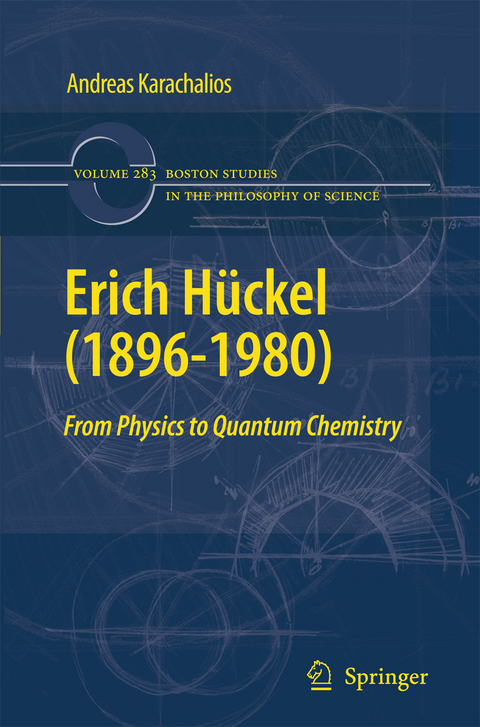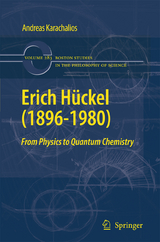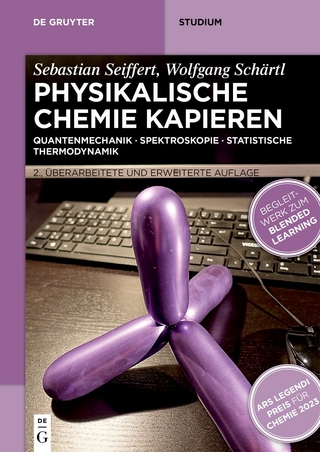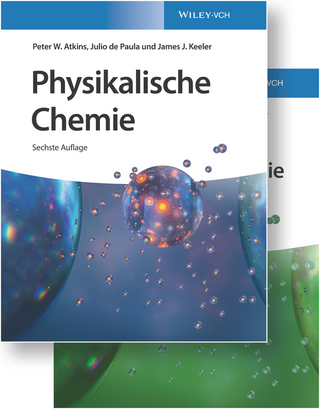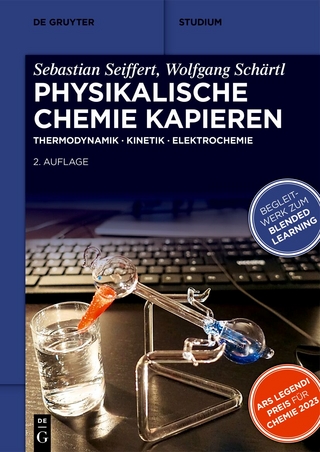Erich Hückel (1896-1980)
From Physics to Quantum Chemistry
Seiten
2010
|
2010 ed.
Springer (Verlag)
978-90-481-3559-2 (ISBN)
Springer (Verlag)
978-90-481-3559-2 (ISBN)
This comprehensive account of Huckel's career examines his scientific work and his key role in the emergence of quantum chemistry as an independent discipline. It also covers his clash with Linus Pauling over the properties of the benzene molecule.
Emerging disciplines in the border zone between physics and chemistry have 1 attracted the attention of historians of science particularly in the last 20 years. 2 Quantum chemistry, as an offshoot of theoretical chemistry, has recently acquired 3 some importance in the history of chemistry. It is the product of close 1 Cf. Hiebert, E. : Discipline Identi cation in Chemistry and Physics, in: Science in Context, 9(2) (1996), 93-119; Nye, M. J. : Physics and Chemistry: Commensurate or Incommensurate Sciences? in: The Invention of Physical Science, Intersections of Mathematics, Theology and Natural Philosophy since the Seventeenth Century - Essays in Honor of Erwin N. Hiebert. Kluwer Academic Publishers, Dordrecht 1992; From Chemical Philosophy to Theoretical Chemistry: Dynamics of Matter and Dynamics of Disciplines, 1800-1950. University of California Press, Berkeley 1994; Servos, J. W. : Physical Chemistry from Ostwald to Pauling, the Making of a Science in America. Princeton University Press, New Jersey 1990; Chemical Sciences in the 20th Century: Bridging Boundaries, edited by Carsten Reinhard. Wiley-VCH, Weinheim 2001 (incl. a comprehensive bibliography).
2 In an earlier article I point out that the term "quantum chemistry" [Quantenchemie] rst appeared in 1929. To my knowledge it was coined by the physicist Arthur Haas. Talks he had del- ered before the Viennese Chemico-Physical Society in the spring of 1929 are assembled in his book: Die Grundlagen der Quantenchemie: Eine Einleitung in vier Vortrage. It was published by the Akademische Verlagsgesellschaft in Leipzig.
Emerging disciplines in the border zone between physics and chemistry have 1 attracted the attention of historians of science particularly in the last 20 years. 2 Quantum chemistry, as an offshoot of theoretical chemistry, has recently acquired 3 some importance in the history of chemistry. It is the product of close 1 Cf. Hiebert, E. : Discipline Identi cation in Chemistry and Physics, in: Science in Context, 9(2) (1996), 93-119; Nye, M. J. : Physics and Chemistry: Commensurate or Incommensurate Sciences? in: The Invention of Physical Science, Intersections of Mathematics, Theology and Natural Philosophy since the Seventeenth Century - Essays in Honor of Erwin N. Hiebert. Kluwer Academic Publishers, Dordrecht 1992; From Chemical Philosophy to Theoretical Chemistry: Dynamics of Matter and Dynamics of Disciplines, 1800-1950. University of California Press, Berkeley 1994; Servos, J. W. : Physical Chemistry from Ostwald to Pauling, the Making of a Science in America. Princeton University Press, New Jersey 1990; Chemical Sciences in the 20th Century: Bridging Boundaries, edited by Carsten Reinhard. Wiley-VCH, Weinheim 2001 (incl. a comprehensive bibliography).
2 In an earlier article I point out that the term "quantum chemistry" [Quantenchemie] rst appeared in 1929. To my knowledge it was coined by the physicist Arthur Haas. Talks he had del- ered before the Viennese Chemico-Physical Society in the spring of 1929 are assembled in his book: Die Grundlagen der Quantenchemie: Eine Einleitung in vier Vortrage. It was published by the Akademische Verlagsgesellschaft in Leipzig.
Erich Hückel’s Education and Scientific Awakening: The Path to Quantum Chemistry.- Erich Hückel’s Research Agenda During the 1930s: Underpinning Organic Chemistry with Quantum Theory.- The Controversy Between Erich Hückel and Linus Pauling over the Benzene Problem.- Linus Pauling’s Breakthrough to the Theory of Aromatic Compounds and Hückel’s Reaction.- Hückel’s Efforts to Disseminate His Theory and Its Reception.- Hückel’s Professional Career in National Socialist Germany.- The Postwar Years.- Summary and Concluding Remarks.
| Reihe/Serie | Boston Studies in the Philosophy of Science ; 283 |
|---|---|
| Zusatzinfo | XVII, 200 p. |
| Verlagsort | Dordrecht |
| Sprache | englisch |
| Maße | 155 x 235 mm |
| Themenwelt | Naturwissenschaften ► Chemie ► Physikalische Chemie |
| Naturwissenschaften ► Physik / Astronomie ► Quantenphysik | |
| ISBN-10 | 90-481-3559-1 / 9048135591 |
| ISBN-13 | 978-90-481-3559-2 / 9789048135592 |
| Zustand | Neuware |
| Informationen gemäß Produktsicherheitsverordnung (GPSR) | |
| Haben Sie eine Frage zum Produkt? |
Mehr entdecken
aus dem Bereich
aus dem Bereich
Quantenmechanik | Spektroskopie | Statistische Thermodynamik
Buch | Softcover (2024)
De Gruyter (Verlag)
59,95 €
Set aus Lehrbuch und Arbeitsbuch
Buch | Hardcover (2022)
Wiley-VCH (Verlag)
109,00 €
Thermodynamik | Kinetik | Elektrochemie
Buch | Softcover (2024)
De Gruyter (Verlag)
59,95 €
